TRILUX Pendant lights
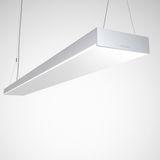
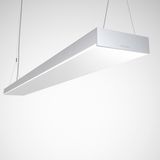
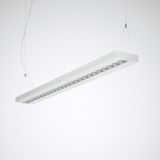
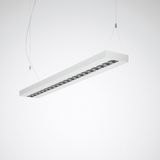
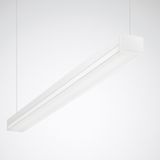
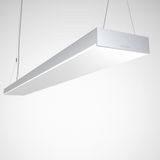




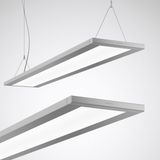
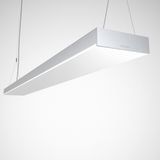
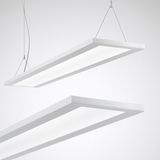
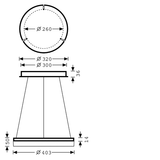
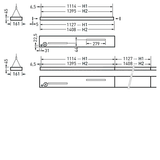

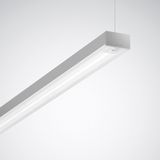

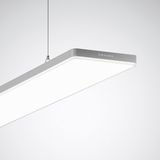

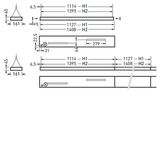
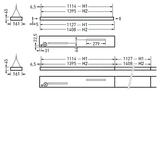
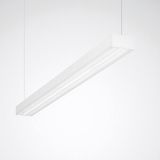



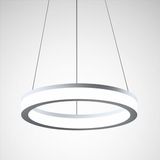
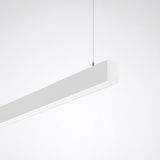
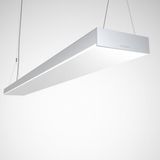
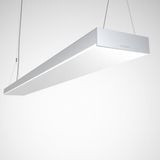
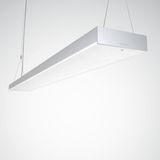
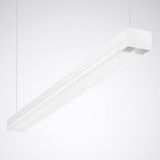
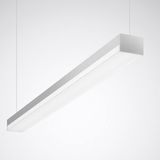
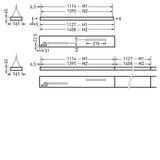
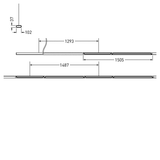
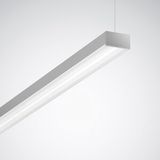


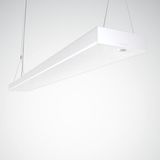
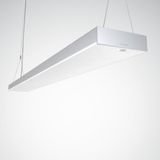

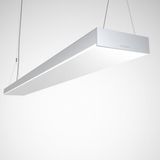
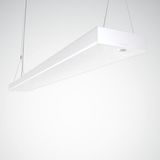

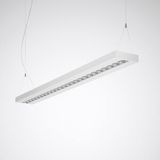


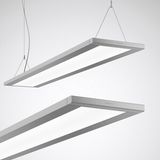


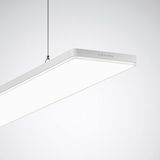
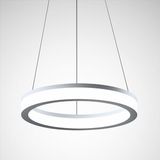
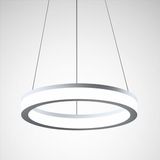
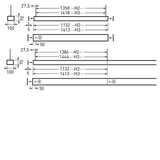


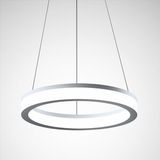
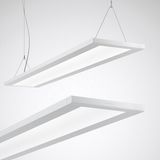
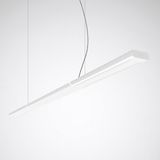
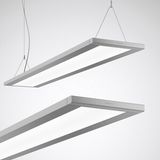
trilux pendant luminaires brand context and scope
Architects and engineers use this category for clean ceilings with controlled glare, stable photometry, and serviceable gear trays. Typical electricals: 220–240 V AC, PF ≥ 0.95, THD ≤ 10–15 %. Optical options include micro-prismatic, dark-light, and wide/elliptical distributions, with CRI 80/90 and SDCM ≤ 3. Efficacy sits around 120–170 lm/W depending on optic and CCT 2700–6500 K. L80 50–100k h at ta 25–35 °C is common, and emergency-ready SKUs accept DALI-2 self/auto-test—use this when the brief calls for trilux pendant luminaires in mixed office and lobby zones.
trilux hanging lights product range and series overview
Families span slim cylinders for reception counters, linear bars for meeting tables, and large-diameter acoustic disks for open offices. IP20 is standard; IP40 options exist for harder environments. Mounting kits cover rigid rods, twin-wire suspension, and power-over-cable variants to avoid a second feed. Output classes range 1500–14 000 lm with both direct and direct/indirect distributions so design teams can specify trilux hanging lights for task planes and ceiling brightness control from one palette.
trilux ceiling pendant fixtures technical specifications and standards
Conformity aligns to EN 60598-1/-2-xx (luminaire safety), IEC/EN 61347 and IEC 62384 (control gear), photometry per LM-79, and reliability evidenced by LM-80/TM-21. UGR < 19 is available for EN 12464-1 office tasks; glare-managed reflectors hold cutoff at higher mounting heights. Surge protection typically 2–4 kV L-N; ambient −20…+45 °C depending on body mass. Loop-through is supported on selected housings; cable sets accept 0.5…2.5 mm² with strip 8–12 mm and torque 0.6–1.2 Nm. These attributes define trilux ceiling pendant fixtures in fit-outs that expect repeatable commissioning across floors.
trilux decorative pendant lamps applications and lighting design
Reception zones, hospitality bars, and collaboration areas need comfortable vertical illuminance and sceneable dimming. Combine low-glare optics over desks with wide batwings above tables; use direct/indirect variants to lift ceilings without over-lighting the task plane. For premium spaces, CRI 90 with R9 > 50 protects finishes and skin tones. When specifying trilux decorative pendant lamps, document height above finished floor (H.A.F.F.), suspension pitch, and target maintained lx so installers don’t improvise on site.
trilux suspended led luminaires controls and system integration
DALI-2 DT6 is the backbone for groups/scenes; DT8 tunable white supports circadian profiles in boardrooms and wellness areas. Push-dim and 1–10 V are available for small rooms; wireless gateways suit retrofit wings where bus cabling is limited. Flicker metrics of PstLM ≤ 1.0 and SVM ≤ 0.4 are achievable with matching drivers. Emergency 1–3 h kits share test-button cut-outs and address space with the same ecosystem. To keep documentation tidy, tag circuits that use trilux suspended led luminaires with max fittings per MCB based on inrush A²s and conductor derating.
trilux modern pendant lighting selection criteria for B2B buyers
Start with the task: desk, table, or circulation. Fix lumens and UGR, then pick optic and CCT per zone. Validate indirect fraction for uniform ceilings, and confirm mounting: rod for rigid alignment, twin-wire where services clash, or power-over-suspension to minimise visible cabling. Check IP/IK per area, ambient range, surge level, and tc measurement points. Publish address maps, scene names, and fallback states. For refurb phases, keep body lengths consistent so trilux modern pendant lighting swaps in without redrilling trays or moving power feeds.
trilux indoor ceiling pendants procurement with Bankoflamps
We align logistics to your commissioning windows: project-specific pricing, near-hour quotes by EAN/MPN, and live EU stock before lifts or night shifts are booked. The portal shows lead times, shipment tracking, and downloadable price lists with validity periods you can plan against. Trusted clients can use post-payment up to 30 days. We consolidate consignments so bodies, drivers, suspension kits, emergency packs, and sensors arrive room-bundled; your account manager cross-checks optics, output classes, IP/IK, inrush/MCB tables, and label schemes against drawings. That level of control keeps trilux indoor ceiling pendants installations site-ready across France, the Baltics, Germany, Spain, Italy, Belgium, and the Netherlands.